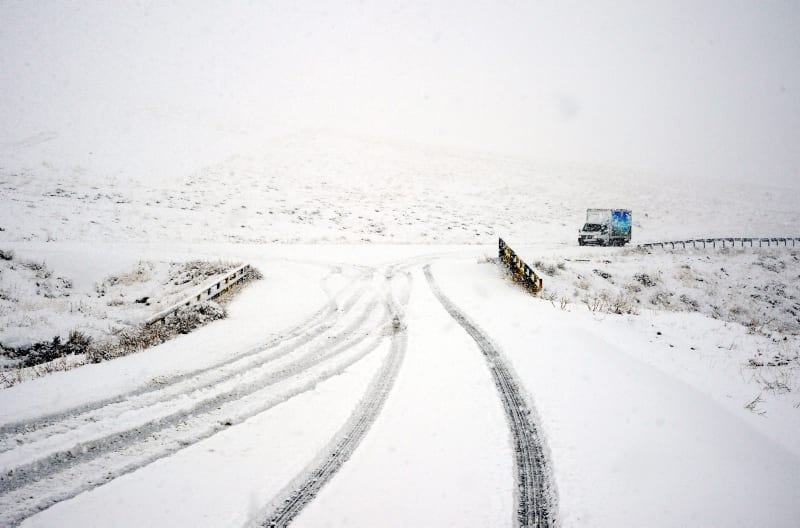The COVID-19 track and tracing teams in Turkey’s eastern province Tunceli continue their work even in rural areas where the winter brought snow as high as 1.5 meters (4.9 feet), while temperatures often drop to a chilly minus 15 degrees Celsius (5 degrees Fahrenheit).
Coronavirus cases in the province have dropped by 80%, while some districts have been declared free of the virus. But with the arrival of the snow, many villages got cut off, making it harder for the teams to reach patients isolating in their homes.
Over 50 tracing teams and more than 100 health care professionals brave the snow and walk for kilometers on end when the snow ambulance cannot go any further.
Dr. Ece Esma Türkel said in an interview with Demirören News Agency (DHA) on Friday that she is proud to stomp through the snow in the fight against the coronavirus. “We try to carry out our orders as best as we can. The number of cases has dropped considerably to the measures taken, our tracing efforts and the weekend curfews,” she said, adding that citizens should not stop taking the measures seriously.
“At times the snow is 2 meters high and the temperatures drop below 20 degrees. Our request from the citizens is to inform us without an exception about the people they were in contact with.”
Tracing team member Mahsum Bal said that they have been tracking and tracing for the last six months, sometimes without a break or day off.
“We are in a good position in terms of the number of cases, but our struggle has changed with the snowfall,” he said, stating that they not only fight the coronavirus but also against the extreme weather. Reiterating that many health care professionals around the world and in Turkey have lost their lives, he asked that everyone be a little more patient, calling on them to continue wearing their masks, respect social distancing and maintain hygiene.
Contact tracing crews, required to wear head-to-toe protective suits at all times while they work, are at the frontline in the fight against the coronavirus, which has claimed 24,640 lives since March in the country. Crews have been the pride of the Health Ministry, which now reports an average rate of 99% effectiveness in contact tracing. The average period of detecting and reaching all of the “contacts” of a coronavirus patient is about eight hours.
COVID-19 patients and people who came into close contact with them are monitored by the teams for 10 days after the first contact. Crews both check their health status by phone and pay them regular visits. Doctors at neighborhood clinics, the most prevalent health care units across the country, coordinate the efforts. Crews analyze the people who patients came into contact with 48 hours before the onset of symptoms or polymerase chain reaction (PCR) tests for patients. The only people exempt from contact tracing are other COVID-19 patients with whom patients came into contact with within three months after testing positive. Reinfected patients are also monitored by contact tracing crews.
Potential coronavirus patients whose tests are not finalized are instructed to remain in self-isolation and are monitored by doctors at neighborhood clinics. Contact tracing is canceled if the potential patient’s test turns negative.
The Health Ministry classifies “contacts” into different groups to facilitate the effectiveness of the crews. The “high-risk” group is a priority. Contacts who approached the COVID-19 patient while both of them were without mask or improperly wearing it are in the high-risk group. Others in this group include those talking to patients for more than 15 minutes within a distance of less than 1 meter (around 3 feet) and family members of the patients. Those caring for patients, those who hugged or kissed the patients, people who were in close proximity of patients in crowded places like waiting rooms of hospitals or banks or in mass transit are also assessed as people in the high-risk group.

